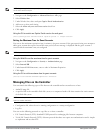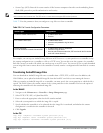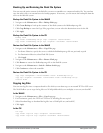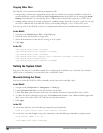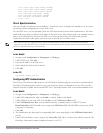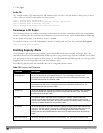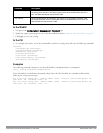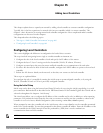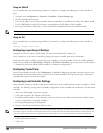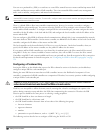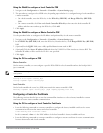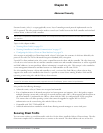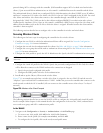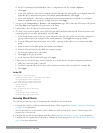
665 | AddingLocalControllers DellPowerConnectW-SeriesArubaOS6.2 | User Guide
Using the Web UI
For a controller that is up and operating with layer-3 connectivity, configure the following to set the controller as
local:
1. Navigate to the Configuration > Network > Controller > System Settings page.
2. Set the Controller Role to Local.
3. Enter the IP address of the master controller. If master redundancy is enabled on the master, this address should
be the VRRP address for the VLAN instance corresponding to the IP address of the controller.
4. Enter the preshared key (PSK) that is used to authenticate communications between Dell controllers.
NOTE: You need to enter the same PSK on the master controller and on the local Dell controllers that are managed by the master.
Using the CLI
For a controller that is up and operating with layer-3 connectivity, configure the following to set the controller as
local:
masterip <ipaddr> ipsec <key>
Configuring Layer-2/Layer-3 Settings
Configure the VLANs, subnets, and IP address on the local controller for IP connectivity.
Verify connectivity to the master controller by pinging the master controller from the local controller.
Ensure that the master controller recognizes the new controller as its local controller. The local controller should be
listed with type local in the Monitoring > Network > All WLAN Controllers page on the master. It takes about 4
– 5 minutes for the master and local Dell controllers to synchronize configurations.
Configuring Trusted Ports
On the local controller, navigate to the Configuration > Network > Ports page and make sure that the port on the
local controller connecting to the master is trusted. On the master controller, check this for the port on the master
controller that connects to the local controller.
Configuring Local Controller Settings
Many controller settings are unique to that device and therefore are not replicated from a master controller to a local
controller. The following settings must be manually configured on a local controller that synchronizes with the master
controller.
l Time zone and daylight savings time settings
l VPN pools for remote APs and other VPN clients.
l Controller and IP interfaces. (Note that these values may need to be set
before
synchronization with the master
so the synchronization can properly complete.)
l IP routing and spanning-tree configurations
l Remote AP whitelist and local-user database values
NOTE: By default, the local Dell controllers forward the authentication requests for the RAP whitelist and the local user database to
the master controller. Therefore, this data does not have to be manually replicated
unless
the default behavior has been altered. The
user table is NOT synchronized, so if an AP fails over to a master from a local or vice versa, that AP will have to re-authenticate.
l DHCP pools and reservations
l NAT pools



